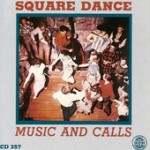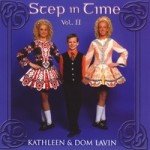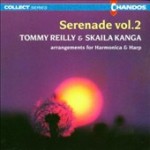One of the first tasks of creating a music program in a school is to begin building a music library. As with anything, you start where you are and use what resources are available to you.
When we started to build our children’s elementary school library, I did a little investigating to see what our school already had. I found a place to store the music in a closet. I reached out to people that I knew had taught elementary school choirs and used wonderful music and asked them for sheet music suggestions. Some people, when they heard what we were trying to accomplish, donated music to us.
We held a fundraiser (a concert and art show) and raised money to buy music and art supplies. We split the funds that we raised between the two programs, and we purchased music stands and sheet music, and that’s how it all began!
Here is the library that after five years or so of building, we have ended up with. (I have posted it here to give ideas for some music that is available for elementary music programs.)
DIRECTOR’S TOOLS
13 flexible black binders
My First Piano Adventure: Lesson Book A: Pre-Reading (with CD)
TOPICS COVERED:
Steady Beat On White Keys
Introduction To The Black Keys
Forte And Piano
The Quarter Note
The Half Note
The Whole Note
The Music Alphabet- A B C D E F G
The C 5-Finger Scale
Staff Preparation
My First Piano Adventure: Lesson Book B: Steps On The Staff (with CD)
TOPICS COVERED:
Review Of Book A
Orientation To The Grand Staff
Reading Steps In The Bass Clef
Time Signatures:4/4 and 3/4
Eight Notes On The Grand Staff
Nine Notes On The Grand Staff
C 5-Finger On The Grand Staff
Tie And Quarter Rest
My First Piano Adventure: Lesson Book C: Skips On The Staff
TOPICS COVERED:
Review Of Book B
Skips For The Right Hand
More Skill With Skips
Three New Terms: Ritardando, Accent, Tempo
Skips For The Left Hand
Space-To-Space Skips
More About The Bass Clef
Hands-Together Playing
CHOIR
The Complete Choral Warm-Up Book
I Believe In Springtime(40 copies) by John Rutter (includes orchestration for violin I, II, & III, viola, cello, bass, flute I & II, oboe, clarinet I & II, French horn I & II, and harp–for an intermediate orchestra)
Foothill School Song (“The Explorers”) by Shawna Belt Edwards and Liz Livingston (available online)
A Dream is a Wish Your Heart Makes by Mack David, Al Hoffman, and Jerry Livingston (3 copies)
All Things Bright and Beautiful by John Rutter (3 copies) for Two-Part Choir with Keyboard
America the Beautiful arr. by John Kinyan (3 copies) Two-Part with Piano
Boogie Woogie Bugle Boy by Don Raye and Hughie Prince, arr. by Ed Lojeski (SSA) (3 copies)
Best Friends Music by Carmino Ravosa Words by Margaret Jones
Billboard Song/Music and Lyric Sheet
Boy’s Songs from Musicals includes CD with accompaniment tracks; includes the following songs:
Casey Junior
Catch a Falling Star
I Need to Know
I’m Late
Let’s Go Fly a Kite
Never Smile at a Crocodile
Prince Ali
The Unbirthday Song
The Wells Fargo Wagon
The Wonderful Thing about Tiggers
Chase Your Blues Away by Patsy Ford Simms (2-part) (3 copies)
Chattanoogie Shoe Shine Boy by Harry Stonet and Jack Stapp (3 copies)
Count Your Blessings Instead of Sheep by Irving Berlin, arr. by Cristi Cary Miller (2-Part) (3 copies)
Cover the World with Love (optional sign language) by Jerry Estes (2-Part SSA with Piano) (3 copies)
Duetto buffo di due gatti (Duet for Two Cats) by G. Rossini (2 copies)
Evening Prayer by Engelbert Humperdink arr. by Audrey Synder (3 copies)
Family Favorites: The Best of Tom Chapin includes the following songs:
Alphabet Soup
The Backwards Birthday Party
Cousins
Family Tree
Good Garbage
Great Big Words
Happy Birthday
Library Song
A Mozart Duet
R-E-C-Y-C-L-E
This Pretty Planet
Together Tomorrow
Uh Oh, Accident
What Is A Didjeridoo?
Fill the World With Love by Lesile Bricusse (2 copies)
A Gaelic Blessing by John Rutter (3 copies) for upper voices (SSA) with organ
Getting to Know You by Rodger and Oscar Hammerstein (3 copies)
Glorious by Stephanie Mabey, arr. Masa Fukuda
Home by Greg Holden and Drew Pearson (2 copies)
Homeward Bound by Marta Keen arr. Jay Althouse (1 copy) (SSA) with Piano
I’d Like to Teach the World to Sing by Bill Backer, Billy Davis, Roger Cook, and Roger Greenway and arr. by Greg Gilpin (2-Part), (3 copies)
I Got Rhythm by Ira and George Gershwin
It’s a Small World by Richard and Robert Sherman arr. by David Fiorenza
Look to the Rainbow by Burton Lane and E.Y. Harburg (3 copies)
Music K-8 Volume ? No. ?
I Spy
The Body Rock Song
She Made Henry Eat Onions
We’ll Remember You
The Kindergarten School Song
We Can Make A Difference
The Future’s Calling Us
Wide Open Spaces
It’s A Fine Day
This Flag We Fly
Dare To Dream
Tingalayo
He’s There For Me
Nothing Rhymes With Orange
Furry Leez
A Bunch Of Animals
Happy Kitty/Woeful Kitty
Chicken Rap
Triangle
Cowaboinga
¡Hasta La Vista!
The Music Connection 2, includes the following songs, (with accompanying CD, Teacher Resource Book, Orff Orchestrations, and Listening Guide)
Zudio
Down, Down Baby
Springtime Has Come
Shake Hands, Mary
Let’s Go Fly A Kite
Oh, Watch The Stars
Frogs
Shake Them ‘Simmons Down
Rock About My Saro Jane
Old Dan Tucker
One, Two Three, Alary
How Good And Joyous
Waddaly Atcha
Ise Oluwa
Old John Braddelum
Sunset
Michael, Row The Boat Ashore
Little Boy Song
Lone Star Trail
My Twenty Pennies
Counting Up The Dinosaur
Kee-Chee
Get On Board
Jubilee!
Little Wheel A-Turnin’
From A Lovely Root
Abiyoyo
Mama Paquita
If All The Raindrops
Temple Bell
Hawaiian Rainbows
Cradle Hymn
Don Alfonso
Animals On Parade
The Sun
Chumbara
Chatter With The Angels
Rabbit Footprints
Circus Parade
My Father’s House
Good Mornin’, Blues
Falling Rain
It’s Me!
Way Down Yonder In The Schoolyard
Best Friends
That’s What Friends Are For
Donne-Moi La Main
I’m Flying Home
Same Train
Come Sailing With Me
The Crocodile
I Had An Old Coat
The Flower
Sweet Potatoes
My Farm
Awake! Awake!
Ev’rybody’s Welcome
America
Mission Control
San Severino
Working Together
Ribbon Dance
Ball-Bouncing Song
Che Che Koolay
A Whale Of A Tale
Recycle Rap
From Sea To Shining Sea
It’s Raining, It’s Raining
There Once Was A Witch
Halloween Is A Very Unusual Night
Over The River And Through The Wood
Thanksgiving
Jingle Bells
Jolly Old Sint Nicholas
La Piñata
Silent Night
Zumba, Zumba
Free At Last
Oh, Freedom
Chinese New Year
Valentine
Las Mañanitas
America, I Hear You Singing
Ev’rybody Smiles In The Same Language
You’re A Friend Of Mine
People What’s A Teacher To Do
We Speak The Same Language
A Little Bit More A Love
Proud To Be An American
Miss White Had A Fright
Bobby Shafto
Rain, Rain
Pease Porridge Hot
Bounce High, Bounce Low
Rocky Mountain
Here Comes A Bluebird
Are You Sleeping
I See The Moon
Yellow Bird
I Bought Me A Cat
Old MacDonald
Bow Wow Wow
Knock The Cymbals
Hot Cross Buns
Frosty Weather
Let Us Chase The Squirrel
All Around The Buttercup
Jim-Along, Josie
Christmas Day Is Come
Santa’s Arrival
Bye, Bye, Baby
Suo Gan
When I’m Dancing
Great Big House
Button, You Must Wander
Little Spider
Rocky Mountain
Somebody Loves Me
Leila A Pretty Girl
Dog And Cat
Old Ark
Canoe Song
My Owlet
Come Out Tonight
Hush, Hush
Black Snake
Canon
Cut The Cake
I Want To Be A Farmer
Clocks
Peas In The Pot
My Mama’s Calling Me
Mystery Song
The Music Collection:Bridges To Asia (With Accompanying CD)
Jan Ken Pon
Hitotsu Toya
Asadoya
Niu Lang Zhi Nü
Yüe Liang Wan Wan
Yü Guang Guang
Go Hyang Eü Bohm
Aksar
Dok Djampa
Cho’i Hát Bôi
Bat Kim Thang
Chim Da Da
Orphan’s Song
Loigratong
Prarthana
Santa Clara
Pandangguhan
My Favorite Things by Hammerstein and Richard Rodgers
No Man Is An Island by Joan Whitney and Alex Framer, arr. by Wlater Ehret, Two-Part SA (3 copies)
Orpheus and His Lute
Over the Rainbow by Harold Arlen and E.Y. Harburg, arr. by Audrey Synder
Pure Imagination by Leslie Bricusse and Anthony Newley (3 copies)
Shake the Papaya Down by Ruth E. Dwyer and Judith Waller, Three-Part Treble Voices with Keyboard accompaniment (1 copy)
Silver Burdett Centennial Songbook includes the following songs:
This Land Is Your Land
My Country, Tis of Thee
Bingo
America, the Beautiful
Yankee Doodle
It’s a Small World
The Star-Spangled Banner
This Old Man
Don Gato
Battle Hymn of the Republic
Erie Canal
O, Susanna
She’ll Be Comin’ Round the Mountain
If You’re Happy
Jingle Bells
Polly Wolly Doodle
Over the River
Skip to My Lou
Old Joe Clark
You’re a Grand Old Flag
Blue-Tail Fly
Kookaburra
Mister Frog Went A-Courtin’
Marching to Pretoria
Best Friends
Old Dan Tucker
Little Ducks
Old MacDonald
I’ve Been Working on the Railroad
Silent Night
All Night, All Day
When the Saints Go Marching In
Michael, Row the Boat Ashore
Eensy Weensy Spider
Mama Paquita
He’s Got the Whole World in His Hands
The LIttle White Duck
Hush, Little Baby
Billy Boy
Skin and Bones
Clementine
Dixie
Clap Your Hands
John Henry
Do-Re-Mi
Shoo, Fly
If I Had a Hammer
Scratch, Scratch
Home on the Range
Going over the Sea
Simple Gifts arr. by Ruth Elaine Schram (SSA) accompanied, with optional flute (1 copy)
Solos from Musicals for Kids includes CD with accompaniment tracks and vocal tracks; includes these songs:
The Bare Necessities
Be Kind to Your Parents
Beauty and the Beast
Born to Entertain
Count Your Blessings Instead of Sheep
Gary, Indiana
I Whistle a Happy Tune
Part of Your World
Tomorrow
Where Is Love?
There’s A Frog On The Loose!
There’s A Frog On The Loose
The Grasshopper and The Frog
Squid and Froglegs
My Guppy
There’s A Big Alligator
There Once Was A Hippo
Lazy Animals
I Had A Cow
My Pig
Stepped On A Beetle
Squirmy Caterpillars
Lady Bug
Funny Little Goat
One Little Chicken
Come Along Myra
Farmer Brown Has A Headache
My Little Dog
My Hound’s Just A Whinin’
Dumplin’ Stew
Miss Nudgley
Sally Brown
Jennifer Allen
We’re Building a Musical Legacy (written for Foothill Choirs and Orchestra) (also available online)
When You Believe (from the movie “Prince of Egypt”) by Stephen Schwartz, arr by Audrey Snyder and John Moss, 2-Part (3 copies) (has a section in Hebrew)
You Can Count on Me by Sammy Cahn and Norman Monath arr. George Swietlicki for SA and Piano (3 copies)
You’re a Grand Old Flag words and music by George Cohan, arr. by Greg Gilpin
You’ve Got Gold Inside of You by Liz Livingston, Tanya Barkdull, and Barbara McConochie (available online at www.freedeliciousmusic.org).
Zum Gali Gali 2 Part with drum and flute, arr. by Greg Gilpin
CHOIR HOLIDAY
A Special Night by Don Besig (Christmas; Two-Part)
December’s Keep (Two-Part) by F. Chopin words and arr. by Greg Gilpin (3 copies)
Dona Nobis Pacem
Dormi, Dormi (Sweetly Slumber) Italian carol, arr. by Mary Goetze (Unison)
Heri Za Krismas (Christmas; Two-Part)
I’m Gonna E-Mail Santa by Benson, Morton, and Chowning, arr. by Jerry Ray (2-Part) (2 copies)
A little Christmas Music and lyrics by Jerry Herman
The International Book of Christmas Carols, includes the following songs:
ENGLISH CAROLS:
We Wish You A Merry Christmas
Good Christian Men, Rejoice
The Seven Joys Of Mary
This Endris Night
Good King Wenceslas
Coventry Carol
When Christ Was Born Of Mary Free
The Holly And The Ivy
The Friendly Beasts
The First Nowell
Joy To The World
What Child Is This
While Shepherds Watched Their Flocks
Gloucestershire Wassail
The Boar’s Head Carol
Wassail Song
The Twelve Days Of Christmas
On Christmas Night(Sussex Carol)
Blessed Be That Maid Marie
A Virgin Unspotted
Once In Royal David’s City
Sleep, Holy Babe
Hark! The Herald Angels Sing
As With Gladness Men Of Old
Angels From The Realms Of Glory
Masters In This Hall
I Saw Three Ships
Deck The Hall With Boughs Of Holly
The Snow Lay On The Ground
Baloo, Lammy
I Heard The Bells On Christmas Day
All My Heart This Night Rejoices
Away In A Manger
There’s A Song In The Air
It Came Upon The Midnight Clear
O Little Town Of Bethlehem
Everywhere, Everywhere, Christmas Tonight
We Three Kings Of Orient Are
Gather Around The Christmas Tree
Jingle Bells
Up On The Housetop
Jolly Old Saint Nicholas
‘Twas In The Moon Of Wintertime
Behold The Star
Rise Up, Shepherd, And Follow
Mary Had A Baby
Go Tell It On The Mountain
O Po’ Little Jesus
Hush, My Babe, Lie Still And Slumber
Brightest And Best (Star Of The East)
FRENCH CAROLS:
We Sing In Celebration
He Is Born, The Holy Child
Angels O’er The Fields Were Singing
O Come Away, Ye Shepherds
The Sleep Of The Infant Jesus
What Is This Perfume So Appealing?
Neighbor, What Has You So Excited?
O Holy Night
Pat-A-Pan
Ballad Of Jesus Christ
Although You Still Are Weak And Helpless
Christmas Comes Anew
Sleep, Little Dove
Shepherd, Shake Off Your Drowsy Sleep
Whence Comes This Rush Of Wings Afar?
Bring A Torch, Jeannette, Isabella
Touro-Louro-Louro
Whence Art Thou, My Maiden?
GERMAN CAROLS:
O How Joyfully
O Christmas Tree
Ring, Little Bells
O Come, Little Children
In Bethlehem So Lowly
While By My Sheep (Echo Carol)
Joseph, Dearest Joseph Mine
The Christmas Tree With Its Candles Gleaming
Susani
Come Running, You Shepherds
Shepherds’ Cradle Song
Dear Nightingale, Awake
Maria Wanders Through The The Thorn
From Heaven Above To Earth I Come
Break Forth, O Beauteous Heavenly Light
Beside Thy Cradle Here I Stand
How Brightly Shines The Morning Star
Lo, How A Rose E’er Blooming
Lippai
As Lately We Watched
The Twilight Is Falling
Above, On The Mountain
Silent Night, Holy Night
A Baby In The Cradle
Still, Still, Still
Gloria
The Simple Birth
Today We Welcome A Tiny Child
SCANDINAVIAN CAROLS:
The Happy Christmas Comes Once More
Lovely Is The Dark Blue Sky
Child Jesus
A Child Is Born In Bethlehem
Yuletide Is Here Again
When Christmas Morn Is Dawning
Thy Little Ones, Dear Lord, Are We
You Green and Glittering Tree, Good Day
O Christmas, You Season Of Childlike Delight
I Am So Glad On Christmas Eve
SLAVIC CAROLS:
Jesus Holy, Born So Lowly
O Come Rejoicing
O Star O’er Bethlehem Shining
Christ Is Born This Evening
Shepherds Came To Bethlehem
Only A Manger Bed
Carol Of THe Hay
In Midnight’s Silence
Polish Lullaby
Praise To Jesus, Our Salvation
We Are Going To The Stable
Rocking Carol
We Have Heard In Bethlehem
From Out The Forest A Cuckoo Flew
I Go To Bethlehem
Sweet Mary Sings Her Babe To Sleep
Come, Hear The Wonderful Tidings
At The Gate Of Heaven Above
Angels From Heaven
ITALIAN CAROLS:
Carol Of The Bagpipers
From Starry Skies Thou Comest
Jesus, The New-Born Babe
Sleep, O Sleep, My Lovely Child
SPANISH CAROLS:
A La Nanita Nana
Come, My Dear Old Lady
Thou Art Well Content
Foom, Foom, Foom
The Son Of Mary
Holy Joseph And Mary The Maid
King Herod
The Icy December
Carol Of The Birds
We’ll Speak Very Softly
O Bethlehem
A Fire Is Started In Bethlehem
O My Loveliest One
In Bethlehem’s Cradle
The Holy Child
At The Hour Of Midnight
Song Of The Wise Men
Shepherds In Bethlehem
Happily Singing
We Are Singing
As The Frightened Baby Jesus
The Journey
Going To Bethlehem
Pray Give Us Lodging
The Babe
Hasten Now, O Shepherds
LATIN CAROLS:
O Come, O Come, Emmanuel
Of The Father’s Love Begotten
A Boy Is Born In Bethlehem
Whom Of Old The Shepherds Praised
O Come, All Ye Faithful
Noel Noel two-part and Flute (1 Copy)
No School Tomorrow lyric page
Peace, Peace by Rick and Sylvia Powell, arr. by Fred Bock (Two-Part; optional obligato by flute, violin or other C instrument)
Reader’s Digest Merry Christmas Songbook (includes a CD and lyric booklet and the following 100+ songs: All Hail To Thee
(All I Want For Christmas Is) My Two Front Teeth
Angels From The Realms Of Glory
Angels We Have Heard On High
As Lately We Watched
As With Gladness Men Of Old
Auld Lang Syne
Away In A Manger
Blue Christmas
Brazilian Sleigh Bells
Break Forth, O Beauteous, Heavenly Light
Bring A Torch, Jeannette, Isabella
Buon Natale (Merry Christmas To You)
Burgundian Carol
Carol Of The Bells
Children, Go Where I Send Thee
Christians, Awake, Salute The Happy Morn
C-H-R-I-S-T-M-A-S
Christmas For Cowboys
Christmas In Killarney
Christmas Is
Christmas Song, The (Chestnuts Roasting On An Open Fire)
Christmas Waltz, The
Coventry Carol, The
Deck The Halls
First Noël, The
For Thy Mercy And Thy Grace
Friendly Beasts, The
Frosty The Snow Man
Go Tell It On The Mountain
God Rest Ye Merry, Gentlemen
Good Christian Men, Rejoice
Good King Wenceslas
Happy Birthday, Jesus
Hark! The Herald Angels Sing
Have Yourself A Merry Little Christmas
Here Comes Santa Claus
Here We Come A-Caroling (The Wassail Song)
Hey, Ho, Nobody Home
Holly And The Ivy, The
Holly Jolly Christmas, A
I Heard The Bells On Christmas Day
I Saw Mommy Kissing Santa Claus
I Saw Three Ships
I Wonder As I Wander
I’ll Be Home For Christmas
It Came Upon The Midnight Clear
It’s Beginning To Look Like Christmas
Jing-A-Ling, Jing-A-Ling
Jingle Bells
Jingle-Bell Rock
Joseph Dearest, Joseph Mild
Joy To The World
Let It Snow! Let It Snow! Let It Snow!
Little Boy That Santa Claus Forgot, The
Little Drummer Boy, The
Lo, How A Rose E’er Blooming
March Of The Kings
March Of The Toys
Marshmallow World, A
Mary’s Little Boy Child
Mele Kalikimaka (The Hawaiian Christmas Song)
Merry Christmas Polka, The
My Favorite Things
Night Before Christmas Song, The
Nutcracker Sweets (Waltz Of The Flowers/Arabian Dance/Trepak)
Nuttin’ For Christmas
O Christmas Tree (O Tannenbaum)
O Come, All Ye Faithful (Adeste Fideles)
O Come, Little Children
O Come, O Come Emmanuel
O Holy Night
O Little Town Of Bethlehem
O Sanctissima
Once In Royal David’s City
Out Of The East
Over The River And Through The Woods
Parade Of The Wooden Soldiers
Pat-A-Pan
Peace Carol, The
Ring Out, Wild Bells
Rise Up, Shepherd, And Follow
Rockin’ Around The Christmas Tree
Rudolph The Red-Nosed Reindeer
Santa Claus, Indiana, U.S.A.
Santa Claus Is Comin’ To Town
Silent Night
Silver Bells
Skaters Waltz, The (Les Patineurs)
Sleep Well, Little Children (A Christmas Lullaby)
Sleigh Ride
Suzy Snowflake
Sweet Little Jesus Boy
Take Me Back To Toyland
That’s What I Want For Christmas
Toyland
‘Twas In The Moon Of Wintertime (The Huron Christmas Carol)
Twelve Days Of Christmas, The
Up On The Housetop
Virgin’s Slumber Song, The
We Need A Little Christmas
We Three Kings Of Orient Are
We Wish You A Merry Christmas
What Are You Doing New Year’s Eve
What Child Is This?
When Santa Claus Gets Your Letter
While Shepherds Watched Their Flocks By Night
Will Santy Come To Shanty Town?
Winter
Winter Wonderland
Star Bright by Lorin F. Wheelwright (Christmas; SA)
Stars that Twinkle and Shine, arr. by Joyce Eilers Bacak (2 part and 3 part mixed)
The Polar Express: A Choral Medley by Glen Ballard and Alan Silvestri; arr. by Teena Chinn (Christmas; Two-Part; optional bass, guitar, drums acc.) This medley includes the songs “Believe,” “The Polar Express,” “When Christmas Comes to Town,” “Santa Claus Is Comin’ to Town,” “Hot Chocolate,” “Rockin’ on Top of the World,” “Winter Wonderland,” and “Spirit of the Season.”
The Jesus Gift by Gilbert M. Martin (3 copies)
Were You There on that Christmas Night by Natalie Sleeth (Christmas; Unison or Two Parts; optional 3-5 oct. handbell accompaniment)
ORCHESTRA
Christmas Kaleidescope
Strictly Strings
We’re Building a Musical Legacy by Nathan Hofheins and Liz Livingston
PROPS
18 Fake Candles
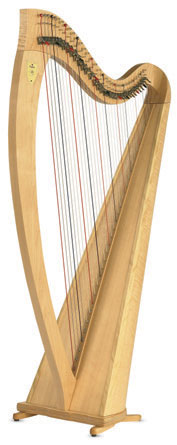

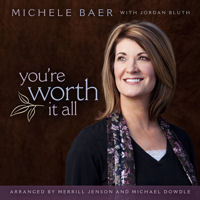
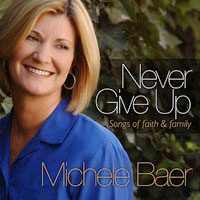 In looking for a video of that song, I discovered another darling song she and her daughter sing called “Come and Play,” from this album, “
In looking for a video of that song, I discovered another darling song she and her daughter sing called “Come and Play,” from this album, “